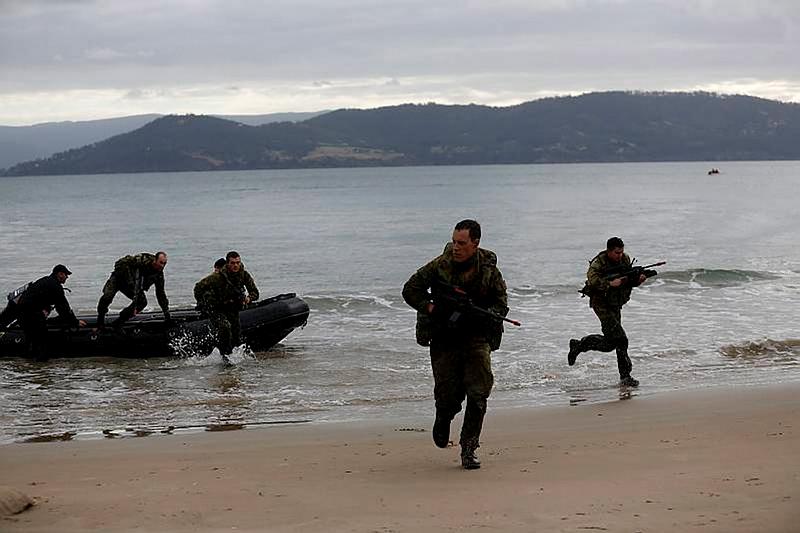 Last week saw National Reserve Forces day, which recognises former and current reservists and thanks their employers and families. But did anyone notice?
Last week saw National Reserve Forces day, which recognises former and current reservists and thanks their employers and families. But did anyone notice?
Over the last few months, there have been a number of policy changes affecting ADF reserves announced, including remuneration, and enhancing their ability to serve. In one media release, the Assistant Minister for Defence, Stuart Robert, stated that those changes reflect ’the fact that Reservists are becoming increasingly integrated into the total ADF workforce’.
But where’s the evidence of that integration?
Plan Beersheba proposes a more integrated force structure for Army, where the Force Generation Cycle ensures that combat brigades, specialist capabilities and part time forces consistently train together. Is that integration, or another attempt at assimilation?
Two weeks ago, the Department of Veterans Affairs (DVA) published a report I wrote based on an exploratory study of Air Force and Army reservists’ health, identity and support needs. The study describes the implications of imposing ’full time’ Defence systems, policies and norms on to those with competing civilian lives.
The alternative is to treat reserve service as a unique form of service that balances the expectations, obligations, and norms found in military and civilian culture.
The study found that the culture of the ADF—one favouring full-time immersion and commitment—creates an environment that systematically and structurally marginalises reserves through a) a system of entitlements designed for permanent members; and b) a standard or expectation of ‘permanents first’; and which is reinforced through c) active discrimination against and bullying of the reserve (which is detailed at length in the study (PDF) in the section called ‘The impact of military culture’ and in a literature review found in the ‘Background’ section that demonstrates this as a theme that is international).
For DVA, this study highlights the need to increase the understanding of the complexity of triggers for service and deployment-related stressors and the resultant impact on mental health for reservists. Post Traumatic Stress Disorder (PTSD) resulting from deployment may not have the same causation as for permanent members, however the psychological impact may be just as significant and debilitating.
This study points to two important paradoxes in the current state of reserve service.
First, deployment and training opportunities presented reservists with opportunities to be considered legitimate members of the Total Force (that is, the total capability that an integrated reserve and permanent force can deliver). However, the mode with which they were offered deployments and the pressure to take them up regardless of civilian commitments meant that reserves were often frustrated by the level of ignorance from the ADF of their dual military–civilian lives.
Second, strategies such as the reservist’s return to civilian employment appear to be an important stabilising resource. In contrast, however, returning to civilian employment too soon following deployment has been associated with increased risk of PTSD. This paradox highlights the complexities reserves face after deployment and the need to examine those issues further in future research.
Policy changes such as those mentioned above go some way in alleviating some of the red tape that has historically been par for the course when reserves attempt to access support, but more work is needed to better understand what Reserve work involves, both personally and professionally.
‘Work’ in Defence is often distinguished from that of the civilian sector with reference to it being ‘service’ rather than work. This ‘service’ is defined by law in the Defence Act 1903 and stipulates that members are ‘bound to render continuous unrestricted service’. In essence this legally and structurally divides those who ‘serve’ from those who simply ‘work’—and with it a swag of cultural baggage associated with being ’part-time committed’.
Observations of the marginalisation of both reservists and women are not new, and the intense focus on gender and culture over the last couple of years is almost reaching a threshold of organisational fatigue.
Effort and change at the tactical level must continue to be met and supported by change at the strategic level by the Abbott Government.
Proposed changes to legislation to alter the ‘bound to render’ construct in the Defence Act 1903 will be tabled in Parliament in early 2015 and represent the most significant attempt at Total Force in the ADF’s history. This isn’t about reducing the liability to serve, rather enabling the flexibility to serve in different and valued ways. Warfighting capability will be retained, and indeed strengthened, by increasing the ability to call upon different components of the total workforce. If those who are ‘part time’ are obligated to serve when needed then the culturally-entrenched arguments regarding ‘part time commitment’ could, and should, erode.
Many will watch with anticipation the parliamentary priority given to this seminal legislative change, and, if successful, we might then begin to see real evidence of integration.
Samantha Crompvoets is a sociologist, and research fellow in the ANU Medical School and contractor to the Department of Defence. Image courtesy of Department of Defence.